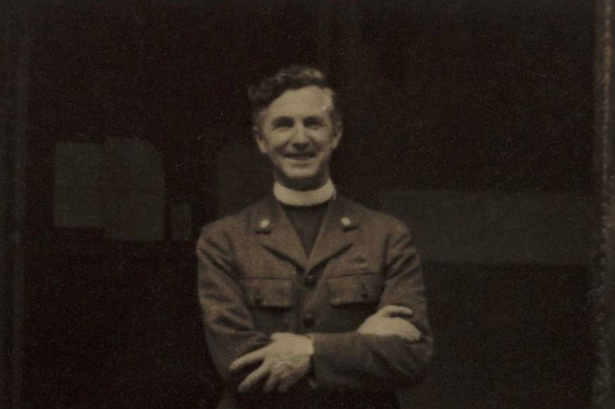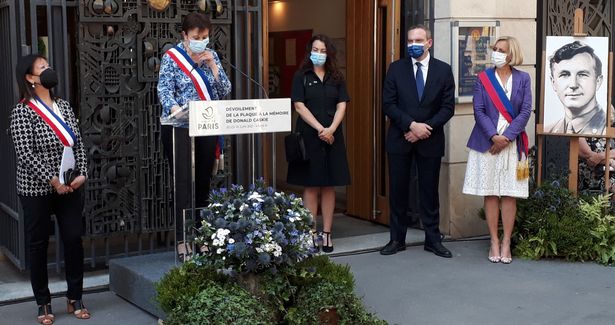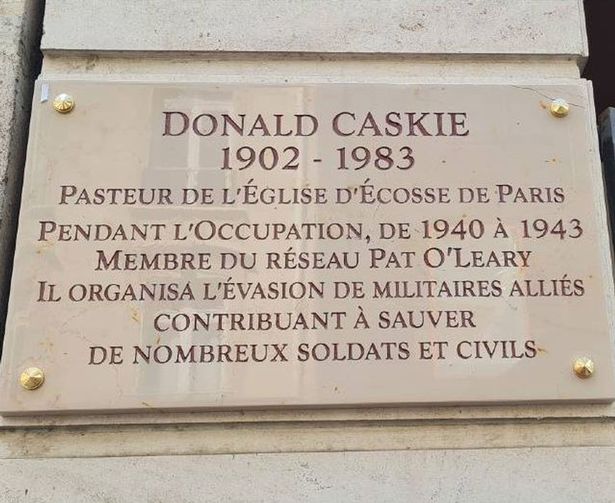Known as the ‘Tartan Pimpernel’, Dr Donald Caskie was born on the Isle of Islay in 1902 Dr Donald Caskie helped allied soldiers escape while living a double life under the watch of Vichy police and the Gestapo(Image: Church of Scotland)
Dr Donald Caskie helped allied soldiers escape while living a double life under the watch of Vichy police and the Gestapo(Image: Church of Scotland)
As Scotland marks VE Day 2025 today, Thursday, May 8, the remarkable wartime tale of a brave Reverend stands out as a story of true courage and persistence. Today we honour the 80th anniversary of that historic day and remember many brave souls from the World War II era.
One of those was Dr Donald Caskie, a Church of Scotland minister from Islay, who became known as the ‘Tartan Pimpernel’ for his heroic acts. Dr Caskie became a lifeline for Allied soldiers stranded in Nazi-occupied France.
He helped hundreds escape while living a double life under the watch of Vichy police and the Gestapo. And his actions saw him honoured in France with a marble plaque in 2021.
Born in Bowmore on the Isle of Islay in 1902, Caskie was one of eight children of a crofter and was said to possess the Celtic gift of second sight. He studied arts and divinity at the University of Edinburgh and New College before taking up his first ministerial role in Gretna.
In 1938, he was appointed minister at the Scots Kirk in Paris. When German forces invaded France in 1940, Dr Caskie remained in the capital and openly denounced the Nazis from the pulpit. His defiance made him a marked man.
Despite repeated pleas to return home, he refused. After the Dunkirk evacuation, he locked the doors of the Scots Kirk on June 9, 1940, and joined the mass exodus out of Paris, heading south on foot.
 More than 100 people gathered for the ceremony in Paris to commemorate Dr Donald Caskie.
More than 100 people gathered for the ceremony in Paris to commemorate Dr Donald Caskie.
He endured weeks of hardship to reach Bayonne, where he was offered safe passage to Britain aboard the final ship departing the port. Instead, he gave up his place to a wounded man, believing others were in greater need.
By sheer luck, he encountered friends from Paris in the village of Cambo-les-Bains. They drove to Marseille together, leaving just hours before German troops arrived.
In Marseille, he felt called by God to remain in France and help British civilians, though he was warned he would be arrested if he aided military personnel.
 The Rev Dr Donald Caskie’s plaque also honours all involved in the Pat O’Leary resistance network.(Image: Church of Scotland)
The Rev Dr Donald Caskie’s plaque also honours all involved in the Pat O’Leary resistance network.(Image: Church of Scotland)
At the British Seamen’s Mission in Marseille, Caskie operated what appeared to be a place of sanctuary. In reality, he was secretly working with British Intelligence, sheltering soldiers, airmen and sailors.
His codename was “Monsieur Le Canard”, Donald Duck, and he became the final link in a chain of safe houses stretching from Dunkirk to the south of France. His chief Resistance contact was Belgian doctor and war hero General Sir Albert-Marie Guérisse, better known by his alias Pat O’Leary.
Among those Dr Caskie helped was Captain Derek Lang, who had been captured at St Valery-en-Caux alongside 10,000 soldiers of the 51st Highland Division.
Lang escaped and reached Marseille, where he encountered the “courageous and fearless” minister. Reflecting on their meeting, Lang later wrote in the foreword to The Tartan Pimpernel book: “Evil in war produces heroes and Donald Caskie is one of these.”
With Caskie’s help, Lang escaped France aboard a ship bound for Beirut, Lebanon. He eventually returned to Britain and played a key role in preparing troops for the D-Day landings.
After the liberation of Normandy, Lang led the 5th Cameron Highlanders in retaking St Valery-en-Caux, the very place where he had once been captured. He later rose to the rank of Lieutenant General and served as Commander-in-Chief Scotland from 1966 to 1969, and as governor of Edinburgh Castle.
 Join the Daily Record WhatsApp community!
Join the Daily Record WhatsApp community!
Get the latest news sent straight to your messages by joining our WhatsApp community today.
You’ll receive daily updates on breaking news as well as the top headlines across Scotland.
No one will be able to see who is signed up and no one can send messages except the Daily Record team.
All you have to do is click here if you’re on mobile, select ‘Join Community’ and you’re in!
If you’re on a desktop, simply scan the QR code above with your phone and click ‘Join Community’.
We also treat our community members to special offers, promotions, and adverts from us and our partners. If you don’t like our community, you can check out any time you like.
To leave our community click on the name at the top of your screen and choose ‘exit group’.
If you’re curious, you can read our Privacy Notice.
Caskie’s underground efforts continued until he was betrayed by another Briton. Arrested by the Gestapo, he was imprisoned in Grenoble and Fresnes, and sentenced to death.
His life was spared only through the intervention of a German pastor. He spent the remainder of WW2 in a prisoner of war camp. Following the war, he returned to Paris before going on to serve in congregations in Gourock, Wemyss Bay and Skelmorlie.
In June 1945, he was awarded the OBE for his wartime bravery. He died in 1983 aged 81 and is buried in Bowmore.
In 2021, 81 years after he locked the doors of the Scots Kirk, a commemorative marble plaque was unveiled on the church’s exterior wall. It honours his heroic wartime service alongside fellow Resistance fighter Pat O’Leary.
